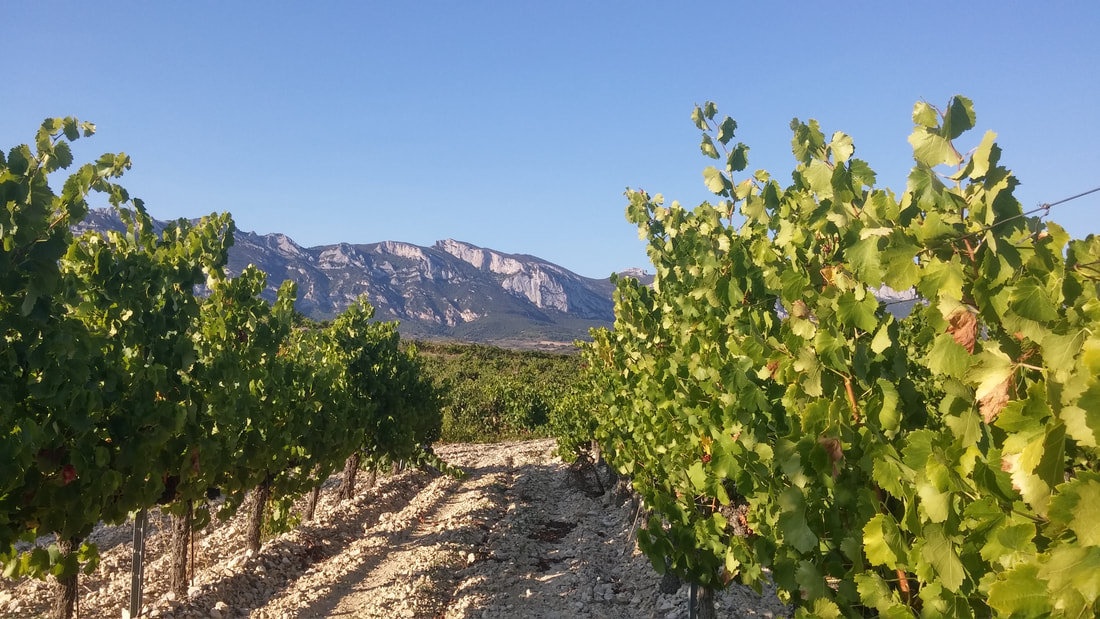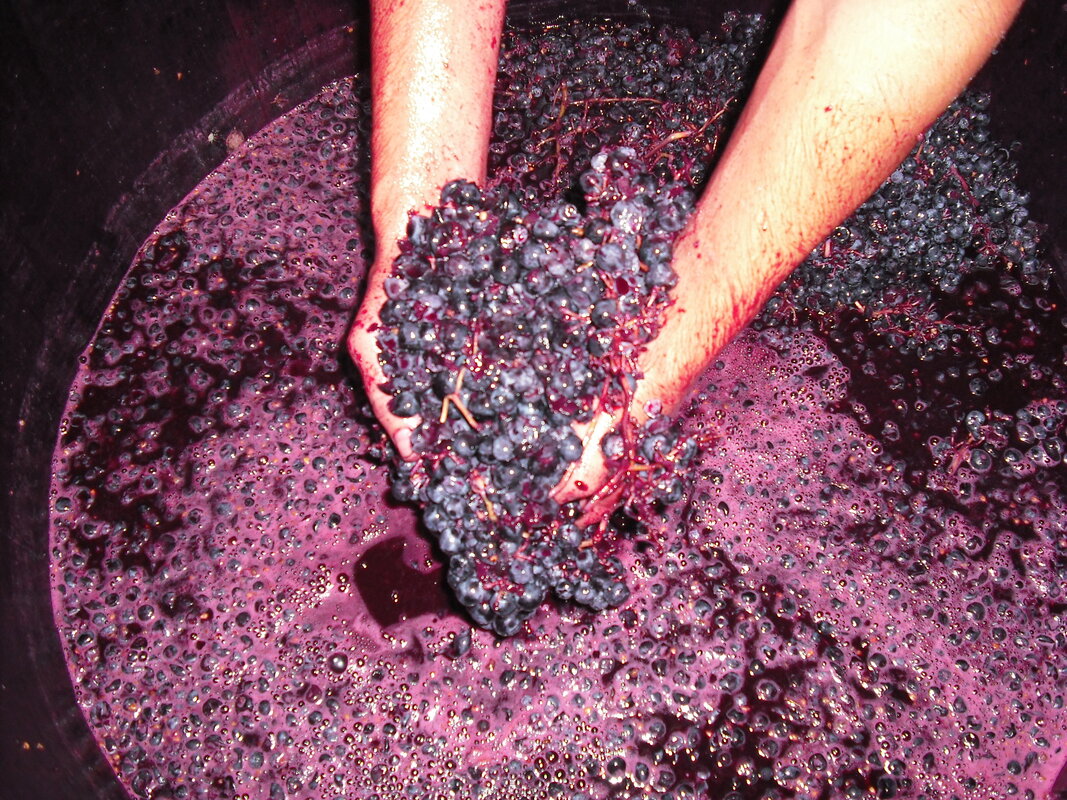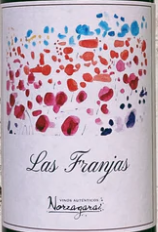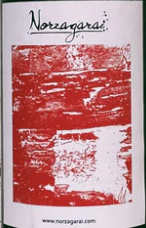Vinos Norzagarai, rioja
Santiago Norzagarai is a Rioja producer making wines unlike any others in the region. Many things set him apart. First of all, he is from Buenos Aires, though he has lived in Spain for 25 years. Secondly, he is working in the Rioja Alavesa with organic vineyards. Thirdly, he is making non-oaky, not-overly-extracted, meant-to-be-drinkable wines with a “non-interventionist approach.” In other words, Norzagarai is trying to change the stylistic perception of wines in Rioja.
Norzagarai spoke to us recently on a video call about honoring the terroir of Rioja Alavesa and making wines that reflect more than just new oak:
“Every single vineyard is facing in a different direction–it has its own microclimate. It’s own soil profile, not compositions. The soil in Rioja Alavesa is all clay-limestone. But in terms of soil structure, we really have all sorts of aspects around here and I’m inclined to showcase that, rather than the Rioja gran riserva, etc. Rioja started as an appellation for the French to make wine when they got phylloxera. The French came down here because they found potential, not because there were crianzas, reservas, and gran reservas. I reckon the potential is mostly in this area. This is where there is the wine profile I am aiming at…We do lots of carbonic maceration wines here. When they’re well-made, they tend to go really well with local cuisine. There’s something to be explored there in that sense. The bold Rioja wines we were told we should be making with heavy oak, etc., this is certainly not the way for me.”
Norzagarai spoke to us recently on a video call about honoring the terroir of Rioja Alavesa and making wines that reflect more than just new oak:
“Every single vineyard is facing in a different direction–it has its own microclimate. It’s own soil profile, not compositions. The soil in Rioja Alavesa is all clay-limestone. But in terms of soil structure, we really have all sorts of aspects around here and I’m inclined to showcase that, rather than the Rioja gran riserva, etc. Rioja started as an appellation for the French to make wine when they got phylloxera. The French came down here because they found potential, not because there were crianzas, reservas, and gran reservas. I reckon the potential is mostly in this area. This is where there is the wine profile I am aiming at…We do lots of carbonic maceration wines here. When they’re well-made, they tend to go really well with local cuisine. There’s something to be explored there in that sense. The bold Rioja wines we were told we should be making with heavy oak, etc., this is certainly not the way for me.”
AOC: Rioja
Varieties: Tempranillo, Mazuelo, Graciano, Garnacha
Viticulture: Organic
Size: 8 Hectares
Terroir: Limestone, Clay
Varieties: Tempranillo, Mazuelo, Graciano, Garnacha
Viticulture: Organic
Size: 8 Hectares
Terroir: Limestone, Clay
|
Vertical Divider
|
|
WINES
|
Carralciego:
Carralciego is a parcel near Samaniego, on massive boulder-like soils of clay-limestone. Carralciego is pretty much what in France is called a lieu dit, in our case: an area in which lots of vines were planted that probably belonged to one single owner at some point. A little bit southwards from the winery it is a plateau at around 600m above sea level that faces south-east. The vineyard that I tend in this place is roughly comprised of 85% Tempranillo and 15% Garnacha. Vines are about 55-60 y.o. and quite the opposite of Las Franjas: shallower roots on hard soils of the same soil composition. Tempranillos in this type of soil structure tend to be harder, tougher and beefier but lacking certain aspects of elegance as acidity is not Tempranillo’s forte. Here’s where garnacha comes into play, Garnachas in Rioja Alavesa have a hard time maturing, although they’re quite productive, they tend to have OK alcohol values and high acidity whereas not much colour (if any) and pretty much no tannin at all. In Carralciego, Garnacha plays a key role as it is harvested at the same time as the Tempranillos, way early for a Garnacha, so it’s that acidity that we’re looking for. In these types of soils Tempranillos gain the structure and mouthfeel that makes clay-limestone so sought after, plus an inherent minerality that is typical for these soils all over the world. However, they do tend to lack the acidity that for me is crucial in any wine, Garnacha aids in that sense. Also organically tended since 1999, pretty much the same proceedings as of that of Las Franjas in terms of viticulture. In the cellar, it is hand-harvested and also indigenous yeasts are in play (everything ferments on its own here). What’s different is that extraction is sought after, so pumpovers are frequent and it rests en cuve for quite some time before pressing, about 6-8 weeks of cuvaison in total. Then it is barely pressed (press wine is very little at this point and it is NOT mixed back into Carralciego) into old french barriques for MLF and resting on its lees for about 15 months, before bottling. No filtration and no stabilization are done prior to bottling. This is the first release of this parcel, I’ve been honing its approach for a couple of years. |
Las Franjas:
Las Franjas is a vineyard parcel in the Villabuena de Álava district, on clay-limestone fragile soils of dissagregated structure. On the eastern side of a light slope right below the Toloño mountain, our natural barrier from extreme cold weather but still able to get lots of Atlantic climatic influence. 100% Tempranillo, 40+ y.o., very deep roots and a surprising acidity for Tempranillo, which is normally what Tempranillo lacks of. Organically farmed since 1999, its soil structure is what really intrigues me. I've had the opportunity of vinifying this and the neighbouring parcels and pH differences have been outstanding throughout vintages. In the vineyard I tend not to mess a lot with the vines nor its habitat: alternate row plowing once a year just on the topsoil, only copper sulphate is used when disease is pressing, no inorganic nitrogen has been added since 2000 just sheep manure now and then, camomile and yarrow preparations are added during flowering and not much else: no defoliation, no cluster thinning. Everything is hand-harvested of course. After 42 different vinification protocols I released the 2014 vintage to the market, about 1000 bottles and a real door opener for me. In the beginning the idea was to profit from the parcel’s surprising acidity in order to make a full-on grand-vin-de-garde, but whenever I aimed at extractive protocols, astringency was just too high and unbearable. So in the end the applied protocol for this parcel had nothing to do with what I was aiming at originally. Las Franjas’ protocol: spontaneous fermentation with indigenous yeasts, virtually NO extraction (just wetting the cap now and then), no pumpovers, a delèstage at 1040º and light pressing at 1000º. End of fermentation and malolactic fermentation in oak barriques, those light lees are kept in the wine throughout ageing for at least 9 months. Barriques are old french oak 225 liters, youngest barriques are 6.y.o. I hand pick used barriques around Rioja trying to avoid any type of contamination from them, I use very low levels of sulphur in the wines and it is crucial that barriques are in top shape. Parcel wines are not stabilized nor filtered prior to bottling and vintages are released to the market upon my own criteria in terms of roundness and potential ageing. |
|
Garnacha:
La Alberca Garnacha 2019 is 100% Garnacha from a single parcel in Peciña. Once a cereal field, when climate was too cold for vinegrowing, when the appellation started to expand Garnacha was planted here. Normally cared for extra acidity in Rioja blends and aimed at larger yields, Garnacha has played and interesting role in our area. This well exposed parcel stands in the coldest part of the appellation, on the foot of the Toloño mountain range. A cool climate Garnacha, aimed at phenolic maturity and very careful extraction. This is a very small plot, about 2000 m2. Hand harvested, crushed, destemmed, cold soaked, indigenous ferment and NO pumpovers whatsoever. Delestage is performed a few times during fermentation. It was then put into 500lt french oak barrels to finish alcoholic fermentation and keep its fine lees during ageing. Malolactic began in xmas and was finished by february. Lees volume was quite important in these barrels so it was stirred all throughout ageing for 11+ months. Racked off its lees and bottled. |
Arreta:
Arreta 2018 is 100% Graciano from 2 parcels. Mostly from Villabuena de Álava, the largest parcel is the least glamorous wine parcel you can think of. It is right on the road and next to the village’s sewage treatment plant. Yet it stands on slightly ferrous marls which promote leaf growth. To me Graciano has always been the most misunderstood variety of Rioja. Classically part of the typical Rioja Blend and mostly planted among Tempranillos and Mazuelos. Hence, harvested at the same time as Tempranillo in most cases (2nd half of September); way too early for Graciano. Most people in the village think Graciano is tannic, astringent, rough and rustic. I agree with them… when harvested as early as Tempranillo. I harvest Graciano by the end of October, once I did so in early November. Graciano doesn’t pick up a massive amounts of alcohol and has great tolerance to botrytis. When late-harvested Graciano is packed with blueberry aromas, fine tannins and lingering healthy acidity. Arreta is hand harvested and put into tank for the indigenous yeasts to take over. It is racked, pumped-over, delestaged and all sorts of extractive techniques. It is pressed at dryness and laid to finish malolactic fermentation in large 500l barrels. Aged in these barrels for 14 months or so. Then stored in bottle for at least a year before its release. |
|
Garua:
Garúa 2021: Carbonic maceration Tempranillo . Quite a tradition here in Rioja Alavesa, I make CM in Beaujolais style in CO2 saturated closed stainless steel tank, not in the typical open cement vats of Rioja. It’s pressed at ‘dryness’ but since there are plenty of whole bunches at this point, fermentation does pick up and go on for a couple of days longer. Then I just leave it to undergo malolactic fermentation slowly in the winery’s basement at lowish temperatures to have some of that CO2 dissolved into the wine. Then it’s lightly filtered and bottled around April-June. I normally make this wine upon request for those interested in an easy drinking young wine out of the younger parcels I tend, those that are in conversion to organic and some bought grapes. |
Mazuelo:
Norzagarai Vinos Autenticos is Santiago's one-man project. Originally Basque, but in Rioja Alavesa he found the vineyards from which he wants to make wine. Keywords: low intervention wine, single Vineyard, elegance. Mazuelo is the local Spanish name for Carinena/Carignan. A grape that is often blended in Rioja. However, Santiago managed to find an old plot that definitely deserves a separate vinification |









